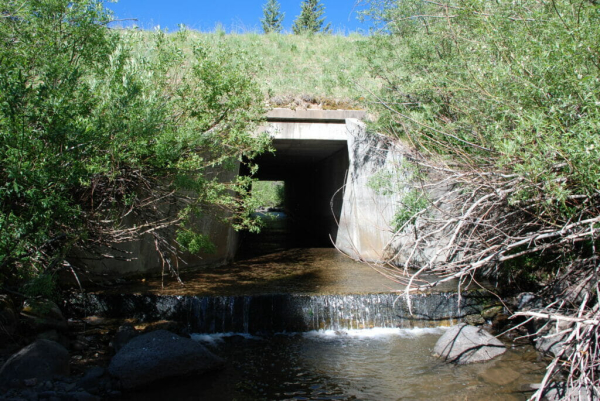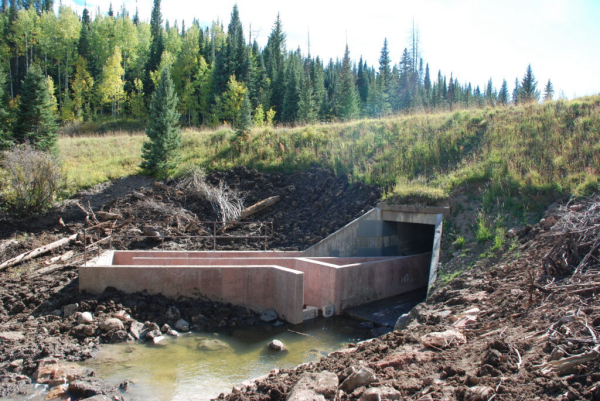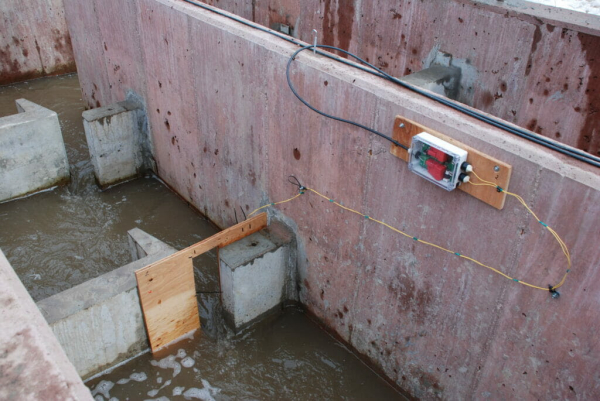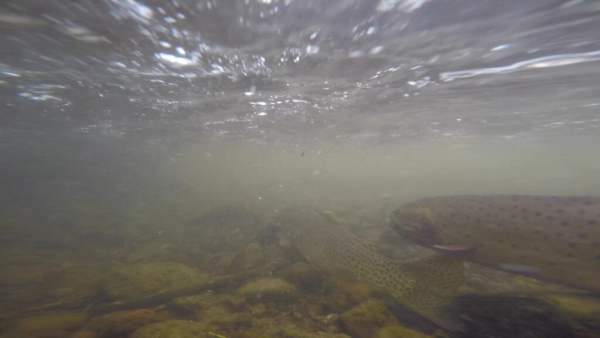Trout Unlimited’s Poose Creek Project in Colorado served as an opportunity to test, validate and perhaps even contribute toward a framework of knowledge around fish passage and habitat connectivity. Colorado River cutthroat trout like this one didn’t take long to use a fishway on Poose Creek in Colorado. Colorado River cutthroat trout like this one didn’t take long to use a fishway on Poose Creek in Colorado. Brian Hodge/Trout Unlimited By Brian Hodge, Trout Unlimited from The Fishing Wire In our work at Trout Unlimited, we often rely on scientific theory to plan and implement conservation projects. In some instances, we also test hypotheses by monitoring projects and comparing predictions with outcomes, and in doing so contribute towards the broader body of scientific theory. For TU and our local agency partners, the Poose Creek Project in Colorado served as an opportunity to test, validate and perhaps even contribute toward a framework of knowledge around fish passage and habitat connectivity. When TU and its partners sampled the headwaters of Poose Creek in 2012-2013, native Colorado River cutthroat trout were almost completely absent from the reach above the one road-stream crossing but relatively abundant in the reach below the crossing.  A 108-foot long, concrete culvert and apron were installed at Poose Creek in the 1960s. Brian Hodge photo. Moreover, at long-term monitoring stations upstream and downstream of the culvert, cutthroat densities were 0 and approximately 437 fish per mile, respectively. This contrast confirmed a standing assumption that the box culvert under the road was, and had for decades been, a complete fish passage obstacle. In 2014, TU and the U.S. Forest Service retrofitted the box culvert with a vertical slot fishway, also known as a fish ladder. Although we only designed the fishway to pass adult trout (which are better swimmers and jumpers than their juvenile counterparts), our ultimate goal was to facilitate repatriation by the native cutthroat above the culvert.  The exiting culvert was retrofitted with a vertical slot fishway in 2014. Brian Hodge photo. The exiting culvert was retrofitted with a vertical slot fishway in 2014. Brian Hodge photo.The fishway project was thus rooted in at least two testable hypotheses: one, that removal or mitigation of the passage obstacle would actually result in fish passage; and two, that the incursion of adult spawners into vacant habitats would result in recolonization by the species (in other words, a few fish would ultimately lead to a lot of fish). Meanwhile, we had much to learn about the effectiveness of fishways for restoring passage to inland (nonanadromous) fish.  Slotted baffles in the 150-foot long fishway allow fish to swim up the ladder. Brian Hodge photo. Slotted baffles in the 150-foot long fishway allow fish to swim up the ladder. Brian Hodge photo.In 2015 and 2016, we teamed up with Colorado Parks and Wildlife to evaluate the first hypothesis — that the fishway would effectively restore fish passage. We captured cutthroat in the mile of stream below the culvert and injected them with passive integrated transponders, or PIT tags. We then used a series of antennas within and around the fishway to monitor the number of approaches to, attempts at, and successful trips through, the fishway. The result? Cutthroat trout began using the Poose Creek fishway within a year of its construction. In fact, the fishway was completed in fall of 2014 and the inaugural trips through the structure coincided with the spring spawning season of 2015. Approximately 4 percent of all PIT-tagged trout approached the fishway, and 100 percent of the fish that approached it succeeded in entering and passing the new structure. These findings, available here, satisfied our first goal of restoring passage. Nevertheless, questions still remained about the ultimate effect of restoring connectivity.  One of four stationary antennas installed in and around the fishway. Brian Hodge/Trout Unlimited One of four stationary antennas installed in and around the fishway. Brian Hodge/Trout UnlimitedIn fall of 2020, approximately one and a half to two cutthroat trout generations after the fishway was installed, we tested the second hypothesis— that restoring fish passage would lead to recolonization of upstream habitats. Specifically, we used backpack electrofishing units to survey a half-mile segment of stream immediately above the culvert, and to repeat a multiple-pass population estimate at the long-term monitoring site (located approximately 0.6 miles upstream of the culvert). In 2012, the segment of the stream was vacant of cutthroat trout. In 2020, the same segment hosted at least 589 cutthroats. Similarly, the same long-term monitoring station that contained cutthroat at a density of 0 fish per mile in 2012 contained cutthroat at a density of approximately 2,752 fish per mile in 2020 (817 fish per mile excluding the 2020 year-class). Just as importantly, the presence of multiple age classes, and of young-of-year fish in particular, confirmed that Colorado River cutthroat trout were spawning in and recruiting to the headwaters of Poose Creek. Of course, we can’t rigorously measure the percentage increase in cutthroat abundance above the fishway because the native salmonid was absent from the long-term monitoring site in 2012. Yet, even without the numbers, we might all recognize the indicator of success.  Colorado River cutthroat trout make their way to spawning grounds. Brian Hodge/Trout Unlimited Colorado River cutthroat trout make their way to spawning grounds. Brian Hodge/Trout UnlimitedIn the end, our findings at Poose Creek offered support of theory:If we do our part to remove migration obstacles from rivers and streams, the fish will take care of the rest. The benefits could be immeasurable. Brian Hodge is the Northwest Colorado Director for Trout Unlimited’s Western Water and Habitat program. |